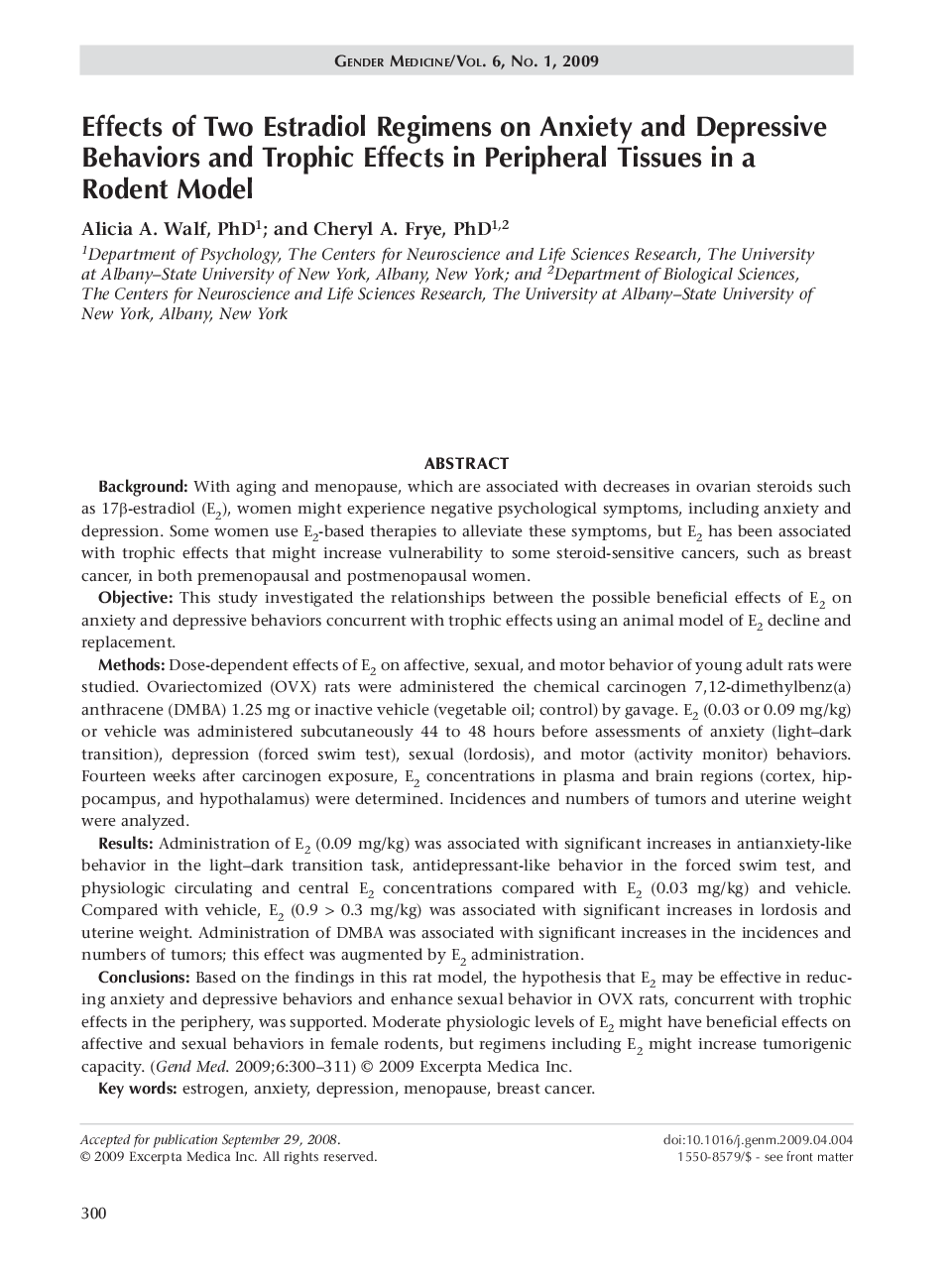| کد مقاله | کد نشریه | سال انتشار | مقاله انگلیسی | نسخه تمام متن |
|---|---|---|---|---|
| 2915818 | 1175593 | 2009 | 12 صفحه PDF | دانلود رایگان |

Background: With aging and menopause, which are associated with decreases in ovarian steroids such as 17β-estradiol (E2), women might experience negative psychological symptoms, including anxiety and depression. Some women use E2-based therapies to alleviate these symptoms, but E2 has been associated with trophic effects that might increase vulnerability to some steroid-sensitive cancers, such as breast cancer, in both premenopausal and postmenopausal women.Objective: This study investigated the relationships between the possible beneficial effects of E2 on anxiety and depressive behaviors concurrent with trophic effects using an animal model of E2 decline and replacement.Methods: Dose-dependent effects of E2 on affective, sexual, and motor behavior of young adult rats were studied. Ovariectomized (OVX) rats were administered the chemical carcinogen 7,12-dimethylbenz(a) anthracene (DMBA) 1.25 mg or inactive vehicle (vegetable oil; control) by gavage. E2 (0.03 or 0.09 mg/kg) or vehicle was administered subcutaneously 44 to 48 hours before assessments of anxiety (light—dark transition), depression (forced swim test), sexual (lordosis), and motor (activity monitor) behaviors. Fourteen weeks after carcinogen exposure, E2 concentrations in plasma and brain regions (cortex, hippocampus, and hypothalamus) were determined. Incidences and numbers of tumors and uterine weight were analyzed.Results: Administration of E2 (0.09 mg/kg) was associated with significant increases in antianxiety-like behavior in the light—dark transition task, antidepressant-like behavior in the forced swim test, and physiologic circulating and central E2 concentrations compared with E2 (0.03 mg/kg) and vehicle. Compared with vehicle, E2 (0.9 > 0.3 mg/kg) was associated with significant increases in lordosis and uterine weight. Administration of DMBA was associated with significant increases in the incidences and numbers of tumors; this effect was augmented by E2administration.Conclusions: Based on the findings in this rat model, the hypothesis that E2 may be effective in reducing anxiety and depressive behaviors and enhance sexual behavior in OVX rats, concurrent with trophic effects in the periphery, was supported. Moderate physiologic levels of E2 might have beneficial effects on affective and sexual behaviors in female rodents, but regimens including E2 might increase tumorigenic capacity.
Journal: Gender Medicine - Volume 6, Issue 1, April 2009, Pages 300-311